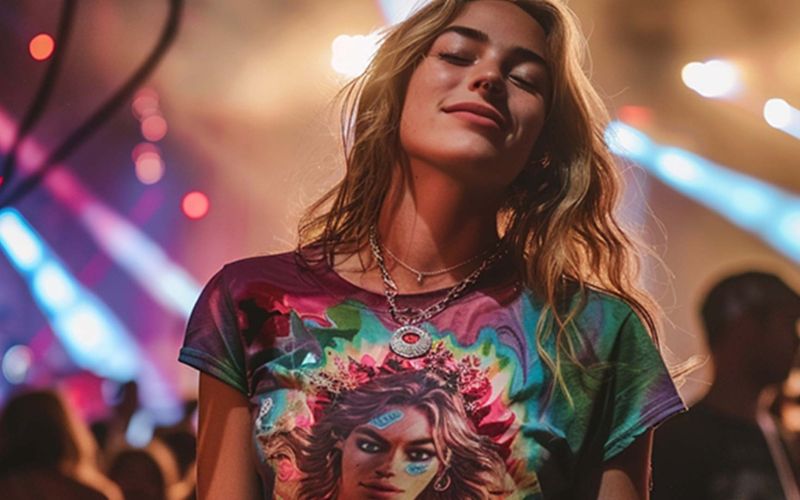Introduction
The Grateful Dead wasn’t just a rock band; it was the heartbeat of an entire generation. But who are the passionate fans that followed the band through thick and thin, and what exactly is a “Deadhead”? In this article, we’re diving into the world of Deadheads—those dedicated, colorful, and free-spirited followers of the Grateful Dead who became an integral part of the band’s legacy.
The Origins of the Term “Deadhead”
The term “Deadhead” first appeared in the 1970s, but its roots trace back to the mid-1960s, when the Grateful Dead began making waves in the music scene. It was first popularized after the release of the band’s “Grateful Dead” album, where a note on the album’s back cover addressed fans as Deadheads. From there, the name stuck and became synonymous with the ever-growing, ever-loyal fanbase of the band.
The Early Days of Deadhead Culture
When the Grateful Dead first started performing, their fanbase was relatively small, but it didn’t take long for a community to form. What made this group different was that following the Grateful Dead wasn’t just about going to concerts—it was about embracing a lifestyle. Fans didn’t just attend shows; they followed the band from city to city, creating a sense of camaraderie and kinship that transcended typical fandom.
What Makes a Deadhead?
So, what exactly defines a Deadhead? It’s more than just wearing tie-dye and listening to “Casey Jones” on repeat. Deadheads are known for their deep appreciation for the Grateful Dead’s music, particularly the band’s improvisational live performances. Many Deadheads describe the concerts as a spiritual experience—where the music, the crowd, and the energy fuse into one collective vibe. Being a Deadhead means you’re not just a passive listener, but an active participant in the journey.
The Grateful Dead Experience: More than Just a Concert
When you went to a Grateful Dead show, you didn’t just see a concert—you stepped into another world. Each show was a unique experience, with no two performances ever being the same. The band was known for improvising, creating a new, distinctive setlist every night. Deadheads loved this unpredictability; you never knew what the band would play next, and that was part of the magic. The energy between the audience and the band was palpable, creating an experience that felt almost transcendental.
Deadhead Lifestyle and Philosophy
The Deadhead lifestyle embraced peace, love, and community. Rooted in the counterculture movements of the 1960s, Deadheads often lived in VW buses, followed the band around the country, and embodied a free-spirited way of life. Tie-dye clothing became a signature symbol of this group, a colorful metaphor for the vibrant personalities that filled Grateful Dead shows. But it wasn’t just about the clothes—Deadhead philosophy revolved around sharing, unity, and an open-minded view of the world.
The Importance of Bootleg Recordings
Deadheads took their love for the music seriously, which is why bootleg recordings of concerts became such a massive part of the culture. The Grateful Dead was one of the few bands to allow fans to record their live shows, creating a treasure trove of tapes that were passed around and traded among the community. These tapes became the ultimate collectible and represented the band’s ethos of sharing their music freely with the world.
Deadhead Gatherings: A Way of Life
Outside of the shows themselves, the scene in the parking lot became a legendary part of the Deadhead experience. This is where “Shakedown Street” emerged—an informal marketplace that popped up before concerts, offering everything from food to handmade crafts to Grateful Dead memorabilia. It was like a traveling fairground of sorts, with its own rules and culture. For many, Shakedown Street was as important as the concert itself, a place to meet like-minded people and celebrate their shared love of the Dead.
The Evolution of the Deadhead Culture
While the Grateful Dead disbanded after Jerry Garcia’s passing in 1995, Deadhead culture has endured. New generations of fans continue to embrace the band’s music and ethos. Deadheads today may not travel by VW bus, but they remain just as dedicated to the community. The spirit of the Grateful Dead lives on, both in the music and in the sense of belonging that has lasted for decades.
Deadheads in the Digital Age
In the digital era, Deadheads have adapted by creating online communities. Social media groups, forums, and websites have become the modern-day gathering places where fans can share stories, concert memories, and, of course, trade bootleg recordings. The Grateful Dead’s music is now more accessible than ever thanks to streaming platforms, allowing new fans to discover what made the band so special.
Famous Deadheads
Did you know that some of the Grateful Dead’s most loyal fans include celebrities? Famous Deadheads like Bill Walton, Al Franken, and even John Mayer have openly expressed their love for the band. This speaks to the widespread appeal of the Grateful Dead’s music—it resonates with people from all walks of life.
Dead & Company: Keeping the Spirit Alive
After the Grateful Dead disbanded, Dead & Company, a new band featuring former members of the Grateful Dead and guitarist John Mayer, stepped in to carry the torch. Dead & Company tours have brought a new generation of fans into the fold, ensuring that the Grateful Dead’s legacy continues to thrive.
The Influence of Deadheads on Modern Festival Culture
If you’ve ever been to a modern music festival like Bonnaroo or Coachella, you’ve probably noticed a little bit of Grateful Dead influence in the air. The communal, free-spirited vibe of Deadhead gatherings helped shape the festival culture we know today. From the pop-up markets to the fan-driven ethos, Deadheads paved the way for what has become a global phenomenon.
Conclusion
The Grateful Dead may no longer be touring, but the Deadhead community is as alive as ever. From the band’s humble beginnings to its lasting impact on music and culture,




